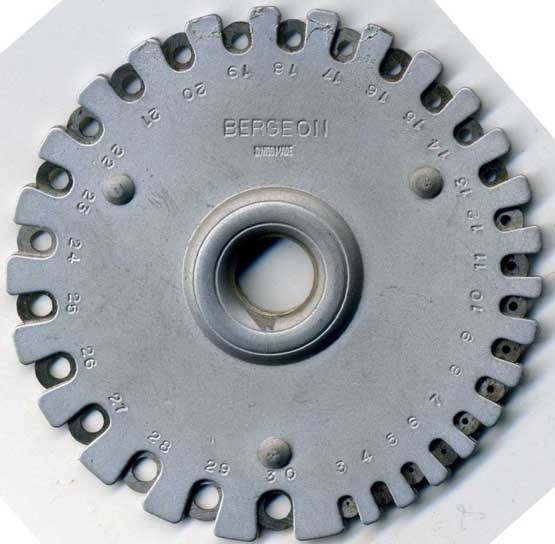|  | posted | |
Good thoughts.
Does anybody have an old catologue?
Perhaps with a discription |
| | | Posts: 507 | Location: West Newton, Massachusetts USA | Registered: September 10, 2006 |  IP
IP
|
|
IHC Vice President
Pitfalls Moderator
IHC Life Member

|  | posted | |
The size of the holes increases with the numbers, which lets out wire gauge. The diameter of the wire increases with lower gauge number.
Best Regards,
Ed
|
| | | Posts: 6696 | Location: Southwestern Pennsylvania, USA | Registered: April 19, 2004 |  IP
IP
|
|
|  | posted | |
Perhaps you can detemine the size of one hole with a small drill bit. I guess the numbers indicate the diameter in hundredths of a milimeter
Gerald |
| | | Posts: 742 | Location: Wertheim in Germany | Registered: February 21, 2009 |  IP
IP
|
|


 Internet Horology Club 185
Internet Horology Club 185  IHC185™ Discussion Site Main Page
IHC185™ Discussion Site Main Page  Horological Discussions, Questions and Answers
Horological Discussions, Questions and Answers  Pocket Watch Discussions
Pocket Watch Discussions  Bergeon Tool
Bergeon Tool Internet Horology Club 185
Internet Horology Club 185  IHC185™ Discussion Site Main Page
IHC185™ Discussion Site Main Page  Horological Discussions, Questions and Answers
Horological Discussions, Questions and Answers  Pocket Watch Discussions
Pocket Watch Discussions  Bergeon Tool
Bergeon Tool








